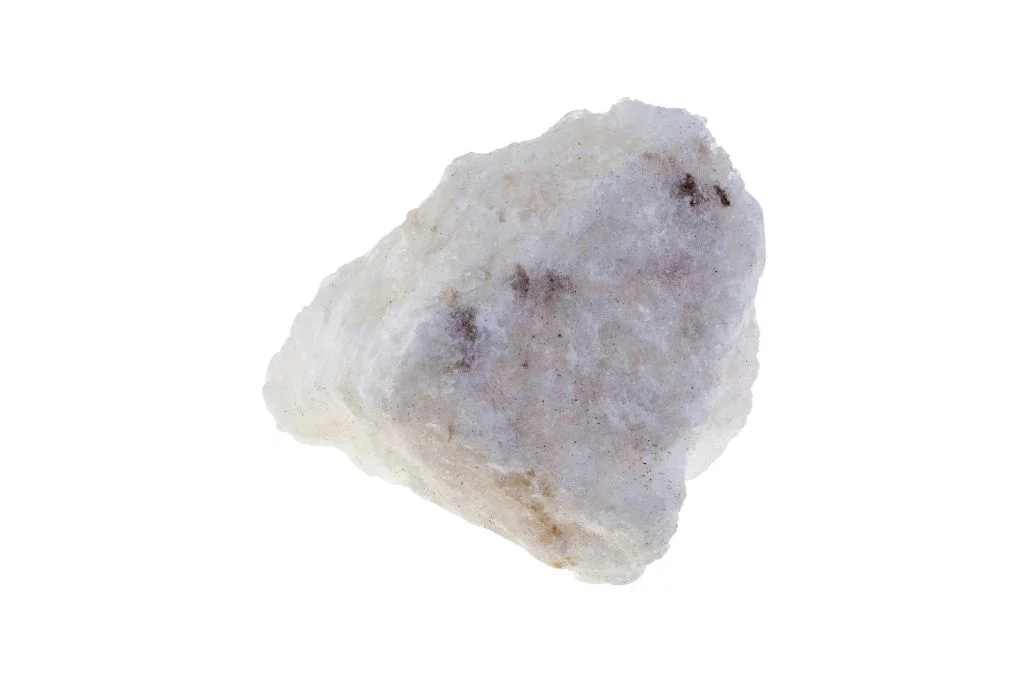Physical Appearance of Anhydrite
Anhydrite is a mineral that exhibits a distinct and interesting appearance. It typically occurs in massive or granular forms, though it can occasionally be found in fibrous or columnar structures. The crystal system of anhydrite is orthorhombic, which contributes to its unique physical properties.
Color Variations
One of the most notable characteristics of anhydrite is its range of colors. It is often found in shades of white, gray, or bluish-gray. However, anhydrite can also occur in pale shades of blue, violet, pink, or even reddish hues. The color variations are often attributed to the presence of impurities or trace elements within the crystal structure.
Luster and Transparency
Anhydrite typically displays a vitreous to pearly luster, giving it a glass-like or slightly iridescent appearance. The mineral can range from transparent to translucent, depending on the specimen’s purity and formation conditions. This variability in transparency adds to its visual appeal and makes it an interesting subject for collectors and mineralogists alike.
Cleavage and Hardness
A distinctive feature of anhydrite is its perfect cleavage in three directions, which results in rectangular fragments when the mineral is broken. This property sets it apart from many other minerals and can be useful in identification. Anhydrite has a Mohs hardness of 3 to 3.5, making it relatively soft compared to many other minerals.
Unique Characteristics
One of the most intriguing aspects of anhydrite is its ability to transform into gypsum when exposed to water. This process, known as hydration, can cause the mineral to expand significantly, potentially leading to structural issues in buildings or engineering projects where anhydrite is present. This property makes anhydrite an important consideration in geological and construction contexts.
Historical and Cultural Significance of Anhydrite
Anhydrite, a calcium sulfate mineral, has played a significant role in various cultures throughout history. Ancient Egyptians used anhydrite in the construction of pyramids and temples, valuing its durability and aesthetic appeal. In medieval Europe, the mineral was ground into a fine powder and used as a pigment in artistic works, particularly in frescoes and murals.
Metaphysical Associations
In the realm of crystal healing and metaphysics, anhydrite is believed to possess powerful properties. Practitioners associate it with mental clarity, emotional balance, and spiritual growth. The mineral is thought to enhance intuition and promote a sense of inner peace. Some metaphysical enthusiasts claim that anhydrite can help alleviate stress and anxiety, making it a popular choice for meditation and relaxation practices.
Common Uses and Applications
Anhydrite finds widespread use in modern industries and traditional practices alike. In construction, it serves as a key component in the production of cement and plaster, contributing to the strength and durability of buildings. The mineral is also utilized in the manufacturing of sulfuric acid, an essential chemical in various industrial processes. In agriculture, anhydrite is employed as a soil conditioner and fertilizer, improving soil structure and providing essential nutrients to crops.
Benefits and Therapeutic Applications
Beyond its industrial applications, anhydrite is believed to offer numerous health benefits. In alternative medicine, it is sometimes used to treat skin conditions and promote wound healing. The mineral’s purported ability to balance emotions and reduce stress has led to its incorporation in holistic wellness practices. Some practitioners recommend placing anhydrite crystals in living spaces to create a harmonious environment and promote overall well-being. While scientific evidence for these claims is limited, many individuals continue to seek out anhydrite for its perceived therapeutic properties.

